Understanding your dog’s care need with a breed dog size chart is crucial when it comes to choosing the right pet for your lifestyle. In this section, we’ll explore why size matters when selecting a dog and how it can impact factors such as space requirements, exercise needs, and even lifespan.
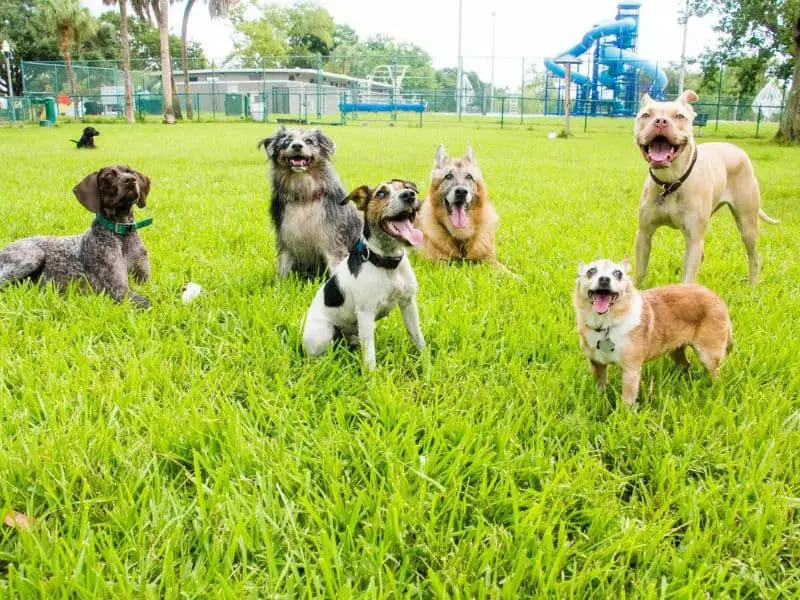
By delving into the relationship between dog size and these critical aspects, you can make an informed decision that ensures a harmonious and fulfilling companionship with your furry friend.
Why Size Matters when Choosing a Dog
Size matters when choosing a dog. It affects space, exercise, and even lifespan. We’ll show you how size determines the space and exercise you need to provide. And is bigger really linked to shorter lifespans?
Space is a factor. Larger dogs need more room to move around. They need space both indoors and outdoors. Smaller dogs can cope in small living spaces like apartments.
Exercise is important. Large dogs have higher energy levels and need more activity. This includes long walks, runs, and playing fetch. Smaller dogs still need exercise, but their needs are usually less intense.
Size also affects lifespan. Smaller dogs tend to live longer. Large breeds often have shorter lifespans due to health issues more common in bigger dogs. But there are exceptions.
How Size Affects Space, Exercise, and Lifespan
Size is a major factor in determining the living space, exercise, and lifespan of a dog. Small dogs, such as teacup and toy breeds, fit better into small homes and apartments.
They don’t require much space to roam. In contrast, larger dogs need more room and may not be suitable for confined living spaces.
When it comes to exercise, size also affects how much physical activity a dog needs. Smaller dogs don’t need too much exercise.
Short walks or indoor playtime is enough to keep them healthy. But medium and large dogs have higher energy levels and need more intense exercise such as long walks or runs.
Besides, size impacts the lifespan of a dog. Generally, smaller breeds live longer than bigger ones. Genetics, metabolism, and overall health all play a role. Large dogs tend to have shorter lifespans and may be prone to certain health issues due to their size.
Before deciding on the size category, people should consider their living situation, lifestyle, and personal preferences.
Professional trainers or breed experts can provide important advice to match individual needs and circumstances.
Finally, large breeds are known for their loyalty and affection to their owners. Despite the shorter lifespans, their love and companionship are priceless, no matter what size.
Exploring the Different Dog Sizes
When it comes to dog sizes, there are six distinct categories that you should know about. From the smallest lap dogs to the largest working breeds, each size has its own unique characteristics and care needs. This section’ll dive into these categories, giving you insight into the different dog sizes and what makes each one special. Get ready to explore the fascinating world of dogs and their varied sizes!
The Six Categories of Dog Sizes
Six categories of dog sizes exist: teacup, toy, small, medium, large, and giant. Each has specific characteristics and considerations. To see the differences between them, create a table with columns for size and characteristics.
| Size | Characteristics |
|---|---|
| Teacup | Very small and delicate |
| Toy | Small and easy to handle |
| Small | Compact and adaptable |
| Medium | Moderate size, versatile |
| Large | Big and energetic |
| Giant | Very large, needs more space and resources |
Teacup dogs are very small and delicate. Giant dogs are much larger and need more space and resources. When choosing a dog, think about your lifestyle and living situation. Match the size to what works for you. Take the time to understand the categories and make a wise choice.
Teacup Dogs
Teacup dogs are a special breed of dog that are wildly small! People find them adorable and charming, making them popular.
These tiny pooches are easy to carry, need less space than larger breeds, and often have longer lifespans. They also eat less, but can be more prone to health issues.
It’s important to remember that teacup dogs have special needs. Handle them delicately, provide a safe environment, get regular vet check-ups, and make sure to socialize them. Doing so will ensure a rewarding experience full of love and joy.
Toy Dogs
Toy Dogs are known for being tiny and portable. This makes them perfect for people with small homes or apartments. Plus, they have lower food expenses due to their size and appetite. They also make great companions and love cuddles with their owners.
However, they can bark a lot if not trained properly. Even though they’re small, they can still have lots of energy. They need regular exercise to stay physically and mentally active.
Grooming also varies depending on the breed. Some need regular grooming to keep their coat healthy.
Toy Dogs come in lots of different breeds. Examples include Brussels Griffon, English Toy Spaniel, King Charles Spaniel, Italian Greyhound, and Japanese Chin. Choosing the right breed for you is important.
Remember that, even if they’re small, Toy Dogs can still make a lot of noise. So, they’re not to be underestimated!
Small Dogs
Small dogs are a breed of their own. They’re perfect for cramped living, like apartments or small homes.
They’re also cheaper to feed than bigger breeds and offer lots of love and comfort. Training them may be tricky though, as they can be stubborn and bark a lot.
Still, these dogs bring great joy and companionship. Grooming and dental care are important for their health.
Small dogs can suffer from issues like dental problems, patellar luxation, and obesity. Giving them regular exercise and a balanced diet is key.
Before getting a small dog, research the breed and speak to experts. Learning about their unique qualities will help you create a wonderful relationship with your pet.
Medium Dogs
Medium-sized dogs provide a balance between the size of small and large breeds. They’re popular choices for many pet owners, as they’re full of energy and agility for outdoor activities such as running and playing fetch. Plus, they tend to live longer than larger breeds.
When it comes to their exercise needs, medium-sized dogs require less space and activity than bigger breeds. However, they still need regular exercise to stay healthy and stimulated.
Their grooming requirements are average; regular brushing will help maintain their coat. Some breeds may shed moderately, so pet owners should be prepared for regular hair cleanup.
It’s important to note that each breed within this category has its own unique characteristics and temperament.
For example, Border Collies are known for their intelligence and energy while Labradoodles are hypoallergenic and friendly.
To find the ideal breed for your lifestyle, you should consult with professional trainers or breed experts to get valuable insights into breed-specific requirements.
Large dogs can look intimidating, but they’re really just big, lovable goofballs who may accidentally knock over your coffee table.
Large Dogs
The table below shows a few of the most popular Big Dog breeds:
| Breed | Traits |
|---|---|
| German Shepherds | athletic and intelligent |
| Golden Retrievers | friendly and loyal |
Including size and strength, these Huge Dogs make great cuddle buddies. Though, their short lifespan is something to think about.
Shedding, drooling and higher food costs also need consideration when choosing a large breed dog.
One thing’s for certain, owning a giant pup may take up a lot of space, but it’ll also take up a lot of love in your heart.
Giant Dogs
Giant Dogs are huge! They need special care due to their size. Exercise, space, and other characteristics should be taken into account. Here’s the breakdown:
Size Category: Giant Dogs
- Height: Over 27 inches (68 cm) tall at the shoulder
- Weight Range: 100+ pounds (45 kg)
- Exercise Needs: Moderate to high
Giant Dogs are big, and they need moderate to high levels of exercise to stay healthy. They are usually gentle and affectionate, but they have shorter lifespans.
Giant Dog breeds have been around for centuries. Ancient civilizations used them for hunting, guarding livestock, and even war. They were respected for their strength and loyalty.
Pros and Cons of Small Dog Breeds
Small dog breeds come with their own set of advantages and disadvantages. In this section, we’ll uncover the pros and cons of opting for a small dog breed. From their suitability for small homes and apartments to the potential savings on food expenses, we’ll explore the practical aspects of owning a small dog. Additionally, we’ll touch upon important considerations like training and barking tendencies. Understanding these factors will help potential dog owners make an informed decision about the right breed for their lifestyle.
Ideal for Small Homes and Apartments
Small dogs – the ideal choice for smaller homes and apartments! Their size allows them to fit in limited spaces without feeling cramped. Plus, they require less space than larger breeds, making them easy to manage in confined living areas.
Moreover, they don’t need large yards for exercise, and their lower energy levels mean they can get enough activity indoors and with short walks.
On top of this, their smaller appetites lead to lower food expenses for their owners. And, of course, they offer loyal companionship and emotional support for individuals living alone in small homes or apartments.
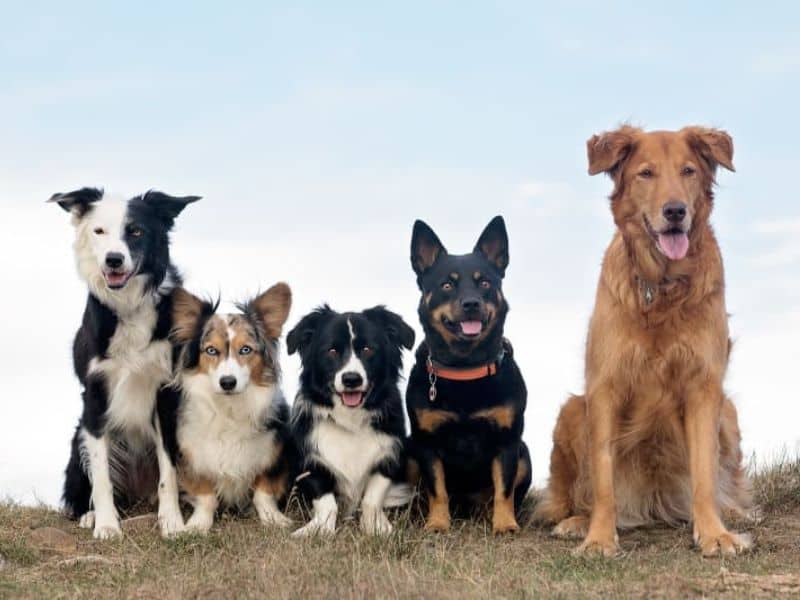
However, small dogs can be prone to certain training challenges and excessive barking. But, with the right training methods and early socialization, these issues can be managed. To make sure your small dog is content and happy, provide them with mental and physical stimulation through interactive toys and activities.
Overall, small dogs are a great choice for people who want to save money on food and have a loyal friend by their side!
Lower Food Expenses and Companionship
Small dogs have certain advantages: lower food expenses and companionship. They need less food than larger dogs so that they can be a budget-friendly option. Plus, their affectionate nature makes them great companions. Here are some other points to consider:
- Smaller dogs consume less food, which can lead to cost savings.
- They eat fewer treats or snacks, so expenses are reduced.
- They are better suited to smaller homes or apartments.
- Less exercise is needed for these breeds.
- They are easier to travel with due to their size.
- They form a strong bond with their owners for emotional support.
When choosing a small dog, remember to factor in training needs and potential barking tendencies. Each dog has its own unique character.
Additionally, small breeds tend to live longer lives than larger ones, with an average lifespan of 10-16 years. This could be due to genetics and the size of the dog’s organs.
Training and Barking Considerations
Training and barking are key when you bring a pup home. You gotta understand their needs and challenges.
Consistency is necessary. Use treats, praise, and rewards for positive reinforcement.
Socialize them with other animals, people, and environments. Control excessive barking by teaching the “quiet” command and providing energy outlets.
Stay calm and consistent – no punishments! Professional help is okay if needed. Plus, it helps to know your pup’s breed and history.
Adaptability and flexibility are essential! Medium-sized dogs? The perfect balance between athleticism and unpredictability. Just like that spinning office chair!
Benefits and Considerations of Medium-Sized Dogs
Medium-sized dogs perfectly balance athleticism and longevity, making them an ideal choice for dog lovers. This section explores the benefits and considerations of owning a medium-sized canine companion.
From their athletic and sporty nature to their potential for a longer lifespan with lower food expenses, we also delve into their exercise requirements and the unique aspect of their size being somewhat unpredictable.
Stay tuned to discover why medium-sized dogs are an excellent choice for those seeking an active and enduring bond.
Athletic and Sporty Companions
Athletic and sporty companions like dogs are known for their physical abilities and active nature. They excel in various sports and activities due to their agility, strength, and endurance.
Active pooches need regular exercise and mental stimulation to stay content and healthy.
These canine athletes have high energy levels and love joining you on runs, hikes, swims, and playing fetch. They’re also quite trainable and can compete in dog sports like agility, flyball, obedience trials, and dock diving.
Plus, they boast other desirable traits like loyalty, intelligence, and a strong desire to please their owners. This makes them perfect for those who lead an active lifestyle.
Before picking an athletic and sporty companion breed, it’s important to consider the size of your home, how often you can exercise or train them, and any local regulations you need to comply with.
Don’t miss out on the joy of having an active companion! Research different breeds and find the one that’s just right for your lifestyle. A fur friend running partner or four-legged teammate for sports activities will inspire you to stay active and bring lots of fun. Start exploring today!
Medium-sized dogs: the perfect balance between athleticism and budgeting.
Enjoy Long Lives and Lower Food Expenses
Medium-sized dogs boast longer lives and lower food expenses than larger breeds, reducing costs for dog food and vet care. However, it is important to consider the breed; different ones have different lifespans and dietary needs. For instance, some can live up to 12-15 years. Also, they require less food than large breeds.
Other factors like exercise needs, grooming requirements, and health issues should be taken into account when deciding on a medium-sized dog that fits your lifestyle. It’s worth noting that while they generally have longer lifespans than large breeds, they may still have slightly shorter ones than small or toy breeds. Nevertheless, they provide an ideal balance of longevity and food expenses. Plus, owners get a sporty pet without the need for much space or high maintenance.
Exercise Requirements and Unstable Size
Regular physical activity is key for responsible pet ownership. It’s vital to consider both the breed-specific exercise needs and size fluctuations of a pup.
- Exercise Needs: Breeds have distinct energy and exercise requirements. Some may need high-intensity activities, while others may prefer moderate. Knowing your dog’s breed-specific needs can help ensure they get the right amount of physical activity.
- Size Changes: Growth spurts or weight changes due to aging or health issues may affect exercise needs. If a pup grows larger or heavier than expected, it’s important to think of the strain it could put on their joints and health. Adjust workouts accordingly.
- Active Lifestyle: No matter size changes, regular exercise is essential for a dog’s overall well-being. It prevents obesity, boosts cardiovascular health, strengthens muscles, and reduces behavioral issues.
- Talking to a Vet: To find the right workout considering size fluctuations, speak with a vet who can assess your dog’s breed, age, health condition, and any size-related needs.
It’s important to remember that exercise needs differ by breed. Analyzing your pup’s breed-specific needs and potential weight changes or growth spurts can help you create a sustainable and beneficial physical activity plan.
Large Dog Breeds: Cuddling Companions with Maintenance Needs
Large dog breeds can make wonderful cuddling companions, but their size comes with specific maintenance needs. In this section, we’ll explore the athletic nature of these dogs, their shorter lifespan, potential intimidation factors, and maintenance considerations such as shedding, drooling, and pooping. Prepare to discover fascinating insights into what it takes to care for these lovable giants.
The Athletic Nature of Large Dogs
Large dogs are known for their athletic prowess and physical abilities. They naturally enjoy activities like running, jumping, and playing. Thanks to their size and strength, they often excel in sports and outdoor activities that require agility and endurance. Whether it’s obedience training, agility courses, or exercise, these dogs thrive in active environments where they can express their energy and take on physical challenges. And, they’re ideal companions for those with an active lifestyle or recreational pursuits.
With their muscular physique, these large dogs possess exceptional athleticism. They can do tasks that smaller breeds may find difficult – like carrying heavy objects, pulling sleds, or helping those with disabilities. Plus, they have high energy levels which need to be channelled through regular exercise and mental stimulation. Activities like jogging, hiking, or playing interactive games not only keep them in shape, but also strengthen the bond between them and their owners.
What makes large dogs stand out from other sizes is their unique characteristics. They tend to have a longer lifespan, but they may need more specialized care due to potential health issues. Additionally, their imposing stature can be intimidating to others. It’s important to provide early socialization and training to ensure they’re well-behaved and calm in different situations.
Max, a German Shepherd, is a great example of the athletic nature of large dogs. He joined his owner on marathon training runs and kept up with their pace without showing signs of exhaustion. His athleticism and determination were inspiring. This story highlights how large dogs can be the perfect companions for those who do physically demanding activities and bring immense joy to their owners’ lives.
Even though large dogs may have a shorter lifespan, don’t underestimate their potential for intimidation.
Shorter Lifespan and Potential Intimidation
Large dog breeds usually live shorter lives than smaller dogs. This is because they age faster and may have health issues which shorten their life. They may also have a genetic disposition for health issues, such as hip dysplasia, arthritis and cancer.
Their size and strength can make them intimidating, so it is important to socialize and train them. You should consider these factors when getting a large breed. Also, they need additional maintenance than smaller breeds. This includes grooming, dealing with drooling and waste management.
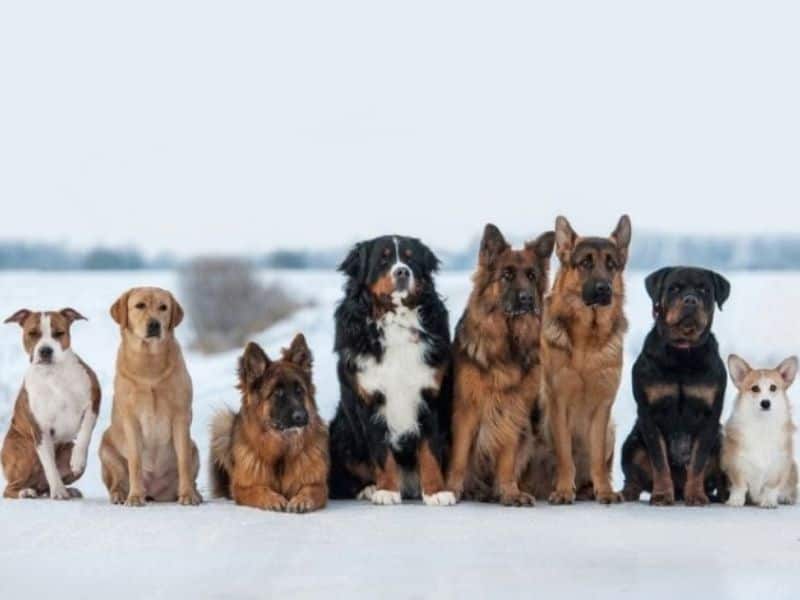
I once met a friend who had a Great Dane. This breed is known for its size and gentleness. She knew the average lifespan was shorter, but she wanted the joy the dog brought. So, be ready for the hairy, slobbery, and smelly aspects of owning a large dog. Shedding, drooling, and pooping come with the package.
Maintenance Considerations: Shedding, Drooling, and Pooping
Shedding, drooling, and pooping are important when it comes to caring for dogs. Knowing these can help pet owners be ready for their furry friend.
- Dog shedding: Depending on the breed, hair length and type can affect how much they shed. Grooming and brushing can help manage it and keep the home clean.
- Drooling: Some dogs drool more than others because of genetics or health. When choosing a breed, drooling should be taken into account.
- Potty training: Essential for maintenance, dogs need regular bathroom breaks and training to go outdoors. Consistent training is key.
- Clean-up: Pet owners must be ready to clean up after their dogs. Waste can be picked up while walking and accidents in the home must be cleaned up.
- Health issues: A healthy diet and lifestyle for the dog and regular vet visits can help minimize drooling or shedding.
- Hygiene practices: Bathing, dental care, and ear cleaning can reduce drooling and keep your pet healthy.
In deciding a pet, take into account preferences and living conditions. Also, some breeds may require more grooming or special care for issues such as shedding, drooling, or potty training. Knowing these needs of different breeds and being able to meet them is key for the pet’s well-being.
Popular Dog Breeds in Each Size Category
Discover the most popular dog breeds categorized by size, from small to large. We’ll take a closer look at each size category and the breeds that fall within them. From energetic small breeds like Pomeranians and Beagles, to delightful toy dog breeds like Brussels Griffons and Japanese Chins, we’ll explore the characteristics and traits that make these dogs special.
Additionally, we’ll delve into medium-sized breeds such as Border Collies and Labradoodles, as well as the majestic large breeds like German Shepherds and Golden Retrievers.
Small Dog Breeds: Pomeranian, Pekingese, Beagle, Yorkshire Terrier, and Dachshund
These small dog breeds might look and act differently, but they all share a few things. For instance, they are ideal for smaller homes as they don’t take up much space. Plus, their food expenses tend to be lower than that of bigger breeds.
However, training them can be difficult as they can be quite stubborn. Also, their barking levels may vary.
When selecting a small dog, there are various qualities to consider. The Pomeranian’s lively personality is great for families with children who need a playful pet. Alternatively, the Yorkshire Terrier’s fashionable look is perfect for people who want an elegant companion.
Toy Dog Breeds: Brussels Griffon, English Toy Spaniel, King Charles Spaniel, Italian Greyhound, and Japanese Chin
Toy dog breeds like the Brussels Griffon, English Toy Spaniel, King Charles Spaniel, Italian Greyhound, and Japanese Chin are a special category of small dogs. Noted for their petite size and cuteness, Brussels Griffons have an expressive face and wiry coat. They are known for being smart and loyal. English Toy Spaniels, on the other hand, have a toy-like look and are elegant. They have a small build, silky coat, and pleasant personality.
King Charles Spaniels are known for their loving nature and sweet temperaments. They have long ears, a delicate coat, and a mild-mannered attitude. Italian Greyhounds are miniature versions of Greyhounds with slim bodies and smooth movements. They are renowned for their athleticism and gentle demeanors.
Similarly, Japanese Chins have a smooth coat, noticeable cheekbones, and expressive eyes. They are recognized for their playful personality and adaptability to different environments.
Each of these toy dog breeds has unique qualities making them suitable for various lifestyles and preferences. These toy dog breeds are desirable companions because of their distinct features and lovely looks.
In short, toy dog breeds such as Brussels Griffon, English Toy Spaniel, King Charles Spaniel, Italian Greyhound, and Japanese Chin are ideal companions with their unique traits and charming appearances.
Medium-Sized Dog Breeds: Border Collie, Golden Doodle, Labradoodle, Nova Scotia Duck Tolling Retriever, and Terriers
Medium-Size Dog Breeds, like Border Collie, Golden Doodle, Labradoodle, Nova Scotia Duck Tolling Retriever, and Terriers, are popular choices for pet owners. These breeds boast athleticism, intelligence, and versatility.
Border Collies are intelligent and excel in activities like obedience and agility training. They need plenty of exercise.
Golden Doodles and Labradoodles are mixes of Poodles and Retrievers. They’re friendly and social, good for families who are allergic.
Nova Scotia Duck Tolling Retrievers are known for hunting waterfowl. They’re playful and need regular exercise.
Terriers have a feisty temperament, intelligence, and bravery. They need mental stimulation through training or puzzle toys.
Each breed has unique traits that fit different lifestyles. Border Collies need outdoor space, while Golden Doodles and Labradoodles can adapt to urban environments. Nova Scotia Duck Tolling Retrievers are good for outdoor activities. Terriers are good for those seeking a spirited but loving pet.
Pro Tip: Before choosing a medium-size breed, consider the dog’s exercise needs, grooming needs, and compatibility with your lifestyle. This will help you have a harmonious relationship with your furry friend.
Large Dog Breeds: German Shepherds and Golden Retrievers
German Shepherds and Golden Retrievers are both part of the large dog breed family. German Shepherds are known for their intelligence and often serve as working dogs. Golden Retrievers, however, are friendly and outgoing.
Both need regular exercise and mental stimulation. German Shepherds have a shorter lifespan compared to Golden Retrievers. But, they both bring joy and love to any home they become a part of.
Finding Your Perfect Match
Finding the perfect four-legged companion involves assessing your lifestyle, seeking guidance from professional trainers, and experiencing the boundless joy and love a dog brings to your home. With this insightful dog size chart, you can confidently navigate through the process, ensuring a harmonious match that fits your unique needs and preferences.
Assessing Your Lifestyle and Needs
Assessing your lifestyle and needs is key when selecting a dog breed. First, evaluate your living space. Consider size and pet restrictions. Some breeds need more space or outdoor access.
Next, consider your activity level and choose a breed that matches your energy. Active people may prefer more exercise, while laid-back types may opt for those needing less.
Time commitment is important too. Consider feeding, grooming, training, and socializing. Also, think about allergies or sensitivities in your home. Choose a hypoallergenic breed if needed.
Longevity is a factor too. Research breed characteristics to assess temperament, size, and activity levels. This will help you find the perfect companion that fits your lifestyle.
Consulting Professional Trainers for Guidance
Professional trainers can be a great resource when it comes to selecting the right dog for you. They can assess your lifestyle and tell you which size category is suitable. They can also provide info on energy levels, exercise needs, and temperaments of different breeds.
Trainers can guide you in understanding the training needs and potential challenges related to the various sizes of dogs. Plus, they can offer advice on socialization, obedience training, and behavior management concerning different-sized pooches.
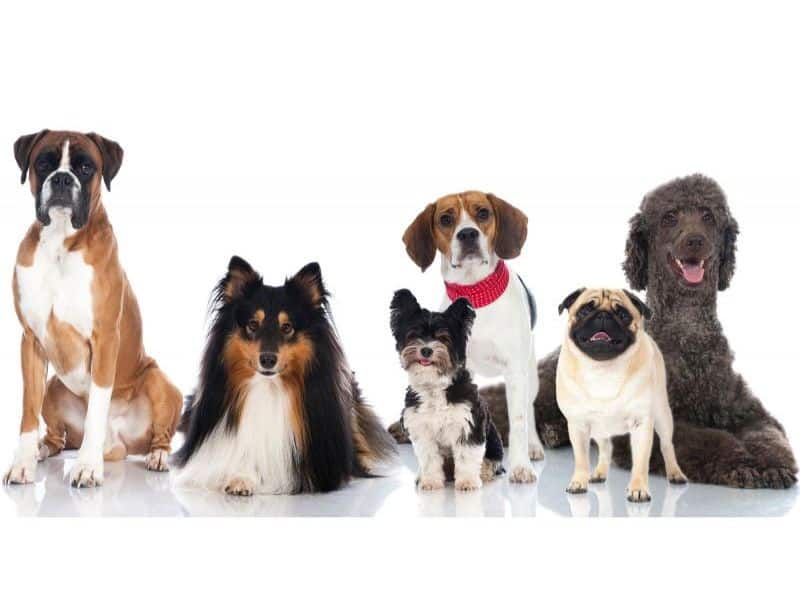
Consulting professional trainers is vital in making an informed decision. They can help you find the perfect companion that suits your expectations and lifestyle within the size category.
However, choosing a dog should also involve personal reflection and research. Understanding your own preferences in regards to exercise requirements, grooming needs, trainability, and living environment will help you find the right match. So, seek guidance from trainers as an additional tool to enhance your decision-making process.
The Joy and Love a Dog Brings to Your Home
Dogs bring a ray of sunshine and love into your home. They become loyal pals and spread happiness and contentment. Dogs have an extraordinary ability to give unconditional love, comfort, and companionship. They are always there for you, ready to wag their tail, give a wet nose kiss, and listen.
A pup in the home can create a cozy and positive atmosphere. Dogs have a remarkable effect on our psychological health. They can reduce stress levels, increase our mood, and reduce feelings of loneliness. Furthermore, they make us laugh with their playful nature.
In addition, dogs promote physical health. Having a canine encourages regular physical activity like walks or playtime. This is great for both the pup’s health and the owner’s fitness. Doing these activities together strengthens the connection between pet and owner.
Moreover, dogs teach us important life lessons such as responsibility, patience, and compassion. Taking care of another being takes commitment and dedication. Dogs rely on their owners for food, exercise, vet care, grooming, and love. By taking on these duties, we gain valuable skills that reach beyond the pup.
Apart from the joy and love a pup brings to our lives, they can serve practical purposes too. Certain breeds can be trained to do therapy work or aid those with special needs.
Pro Tip: Before bringing a dog into your home, research different breeds. Think about size, energy level, temperament, exercise needs, grooming needs, and compatibility with kids or other pets. The joy and love a pup brings to your home is unbeatable.
Some Facts About Understanding Your Breed: An Insightful Dog Size Chart:
- The size range of dogs is vast, from 2-pound Yorkies to 200-pound Newfoundland dogs.
- Smaller dogs tend to live longer on average, with larger breeds having shorter lifespans.
- Teacup dogs have the lowest life expectancy due to selective breeding and health issues.
- Large and giant dogs require more space, exercise, and higher expenses.
- Understanding your space and lifestyle is important before choosing a dog breed.


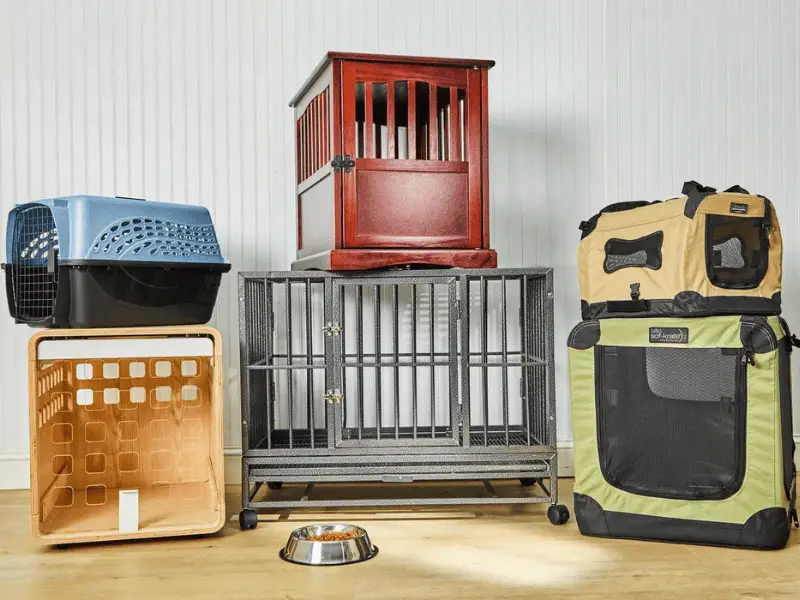
Leave a Reply